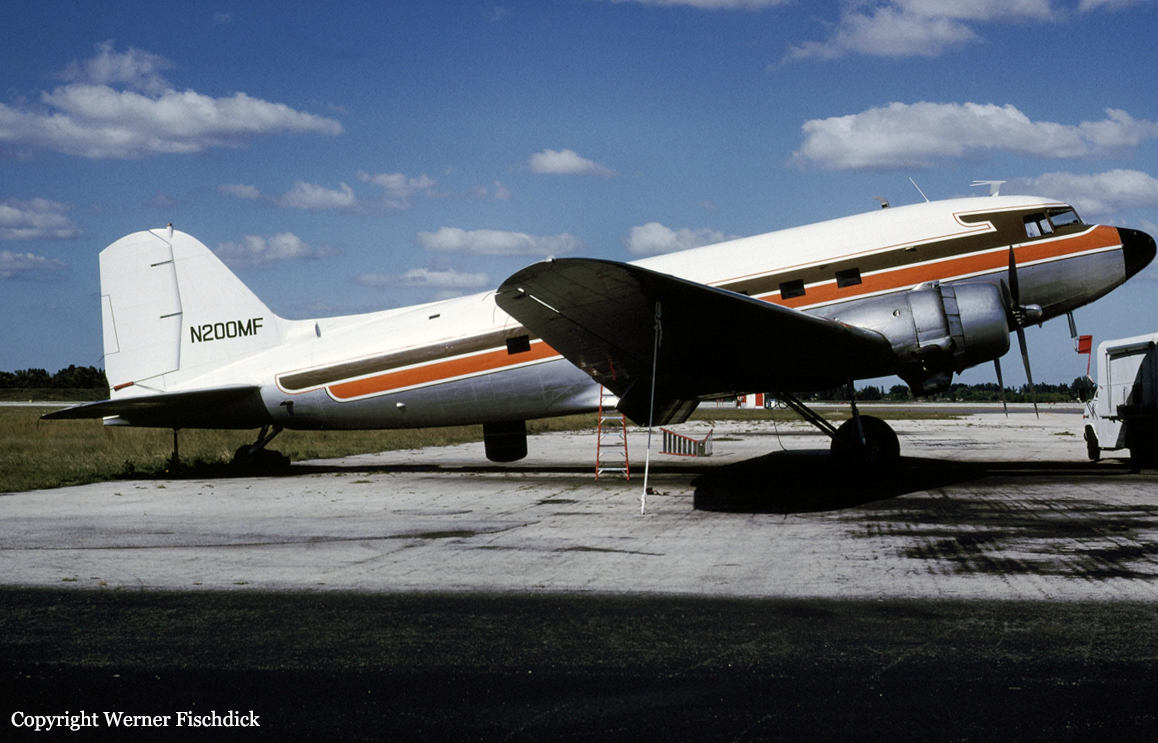Country
Crash of a Douglas C-47A-80-DL in Donalsonville
Date & Time:
Mar 15, 2001 at 2130 LT
Registration:
N842MB
Survivors:
Yes
Schedule:
Panama City – Albany
MSN:
19741
YOM:
1943
Flight number:
HKN041
Crew on board:
2
Crew fatalities:
Pax on board:
0
Pax fatalities:
Other fatalities:
Total fatalities:
0
Captain / Total hours on type:
700.00
Circumstances:
The DC-3 experienced an in-flight engine fire, and made a forced landing at nearby airport, following the separation of the right engine assembly from the airframe. According to the pilot, during cruise flight, at 5000 feet, he heard a loud "bang" and saw a reflection of fire on his left engine nacelle. Fire damage was found on the trailing edge of the right wing and on the landing gear assembly. The engine examination also showed that No. 12 cylinder had separated from the main case. Evidence of oil from the No. 12 cylinder was found across engine and exhaust systems. Further examination revealed Nos. 7, 8 and 9 cylinders also failed and separated, and the engine seized and separated from the airframe.
Probable cause:
The failure and separation of No.12 cylinder from the engine case that resulted in an in-flight oil fed fire; and the subsequent separation of the right engine from airframe.
Final Report:
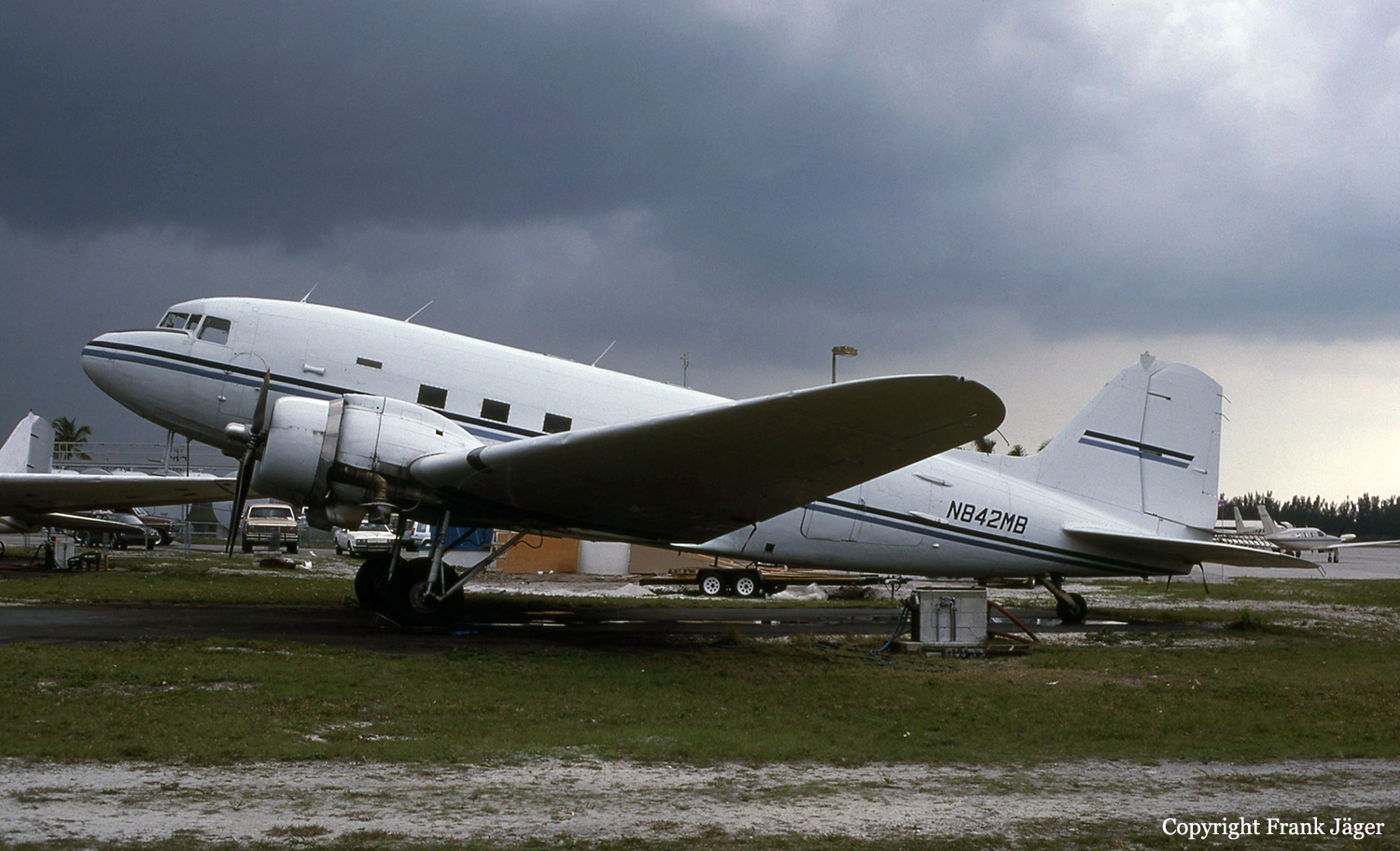
Crash of a Douglas C-47B in Charlotte
Date & Time:
Sep 26, 2000 at 0635 LT
Registration:
N12907
Survivors:
Yes
Schedule:
Anderson - Charlotte
MSN:
15742/27187
YOM:
1945
Crew on board:
2
Crew fatalities:
Pax on board:
0
Pax fatalities:
Other fatalities:
Total fatalities:
0
Captain / Total hours on type:
7500.00
Aircraft flight hours:
17425
Circumstances:
After an approach to runway 5, and touched down at 85 knots, the airplane yawed right, exited the runway, the right main landing gear collapsed, and the airplane nosed over. Examination of the airplane revealed that a right main wheel brake had locked up, and the landing gear had collapsed. Inspection of the right main landing gear assembly and all associated components could not provide any determination as to what caused the main wheel brake to lockup. The brake assembly was broken down into its component parts and inspected. No evidence of malfunction could be detected. No contamination of the hydraulic fluid was evident.
Probable cause:
The right main brake locked after touchdown causing the airplane to yaw and depart the runway, resulting in the landing gear collapsing.
Final Report:
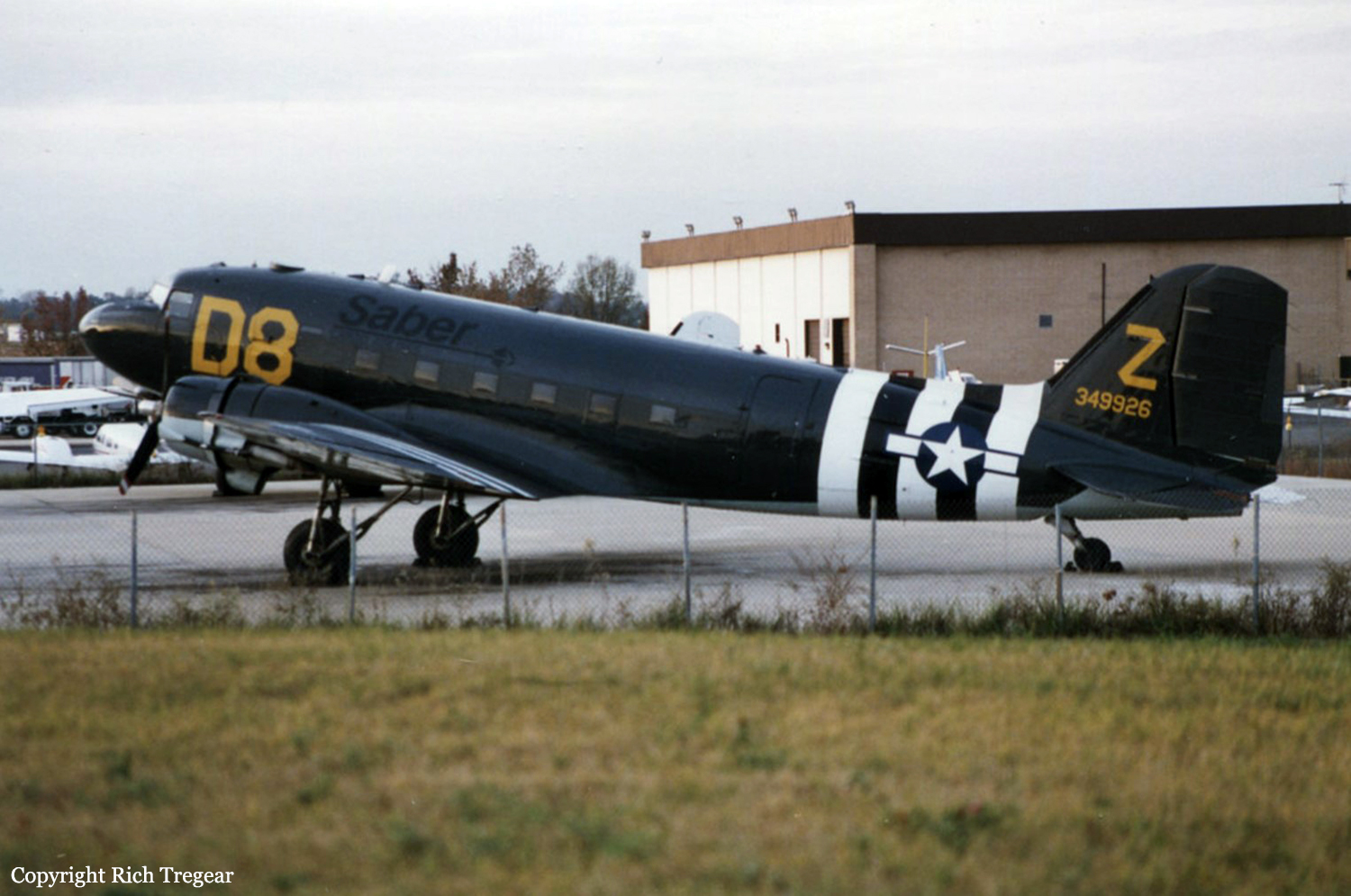
Crash of a Douglas C-47A-10-DK in Nassau: 2 killed
Date & Time:
Jul 20, 2000 at 1312 LT
Registration:
N54AA
Survivors:
No
Schedule:
Nassau - Freeport
MSN:
12475
YOM:
1944
Crew on board:
2
Crew fatalities:
Pax on board:
0
Pax fatalities:
Other fatalities:
Total fatalities:
2
Circumstances:
On July 20, 2000, about 1312 eastern daylight time, a Douglas DC-3, N54AA, registered to Allied Air Freight, Inc., operating as a Title 14 CFR Part 135 cargo charter flight, crashed after takeoff from Nassau International Airport, New Providence Island, Bahamas. Visual meteorological conditions prevailed and a VFR flight plan was filed. The airplane was destroyed by post crash fire and the ATP-rated pilot and commercially-rated copilot were fatally injured. The flight originated about 6 minutes before the accident. According to initial reports, after takeoff from runway 14, the pilot advised the tower that he would have to shut down the right engine and return for an emergency landing on runway 14. The airplane was observed to lose altitude and crash about 2 miles from the airport, east of the extended centerline of runway 14.
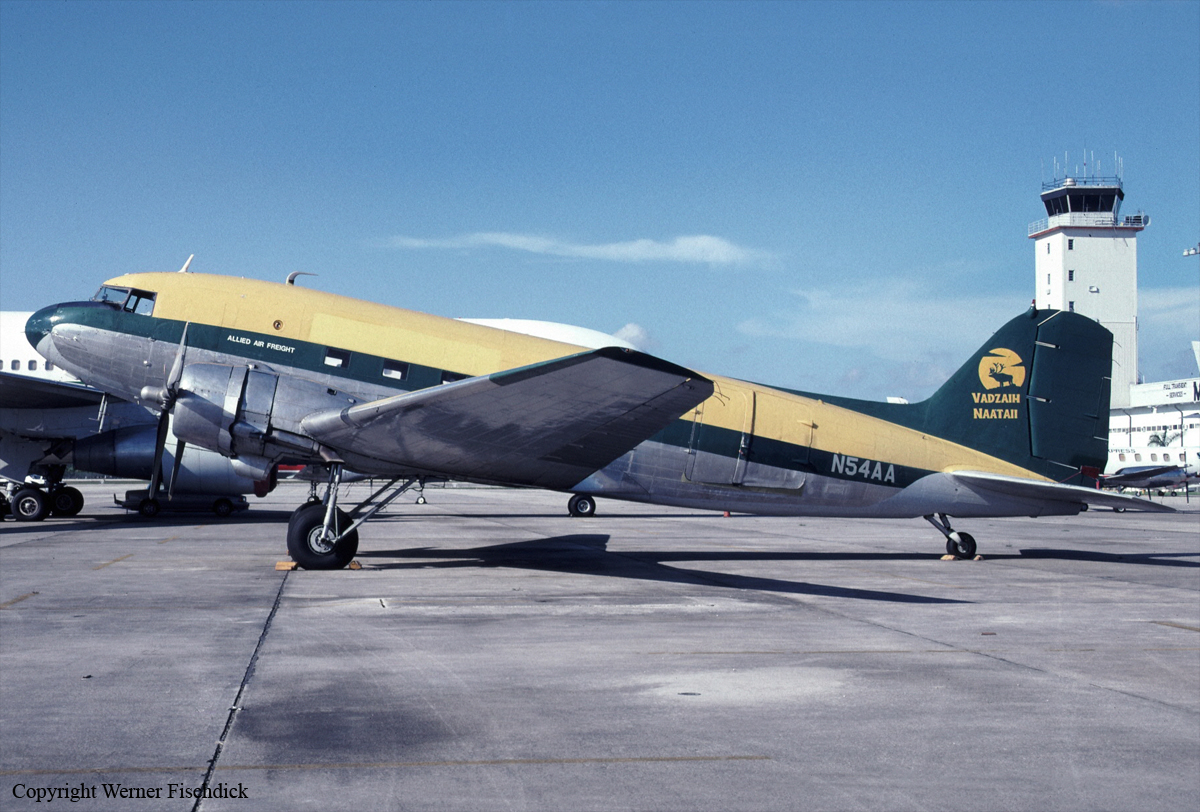
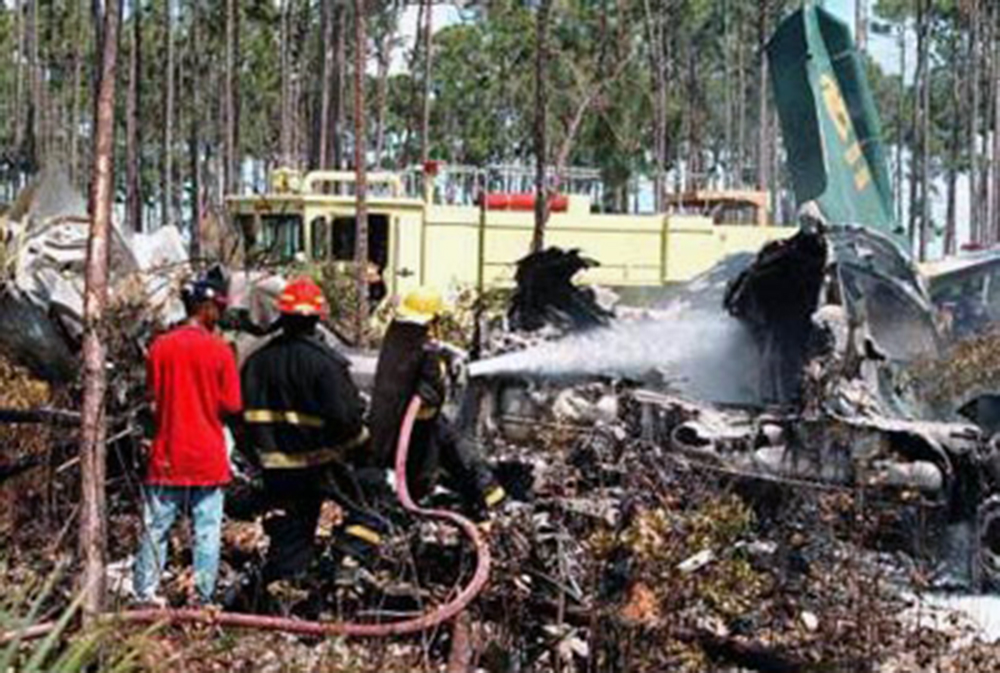
Crash of a Douglas C-47A-5-DK in Ennadai Lake: 2 killed
Date & Time:
Mar 17, 2000 at 1230 LT
Registration:
C-FNTF
Survivors:
No
Schedule:
Points North Landing - Ennadai Lake
MSN:
12344
YOM:
1944
Crew on board:
2
Crew fatalities:
Pax on board:
0
Pax fatalities:
Other fatalities:
Total fatalities:
2
Captain / Total hours on type:
840.00
Copilot / Total hours on type:
85
Circumstances:
The Douglas DC-3 departed Points North Landing, Saskatchewan, about 1125 central standard time on a visual flight rules flight to Ennadai Lake, Nunavut, with two pilots and 6600 pounds of cargo on board. The flight was one of a series of flights to position building materials for the construction of a lodge. The pilots had completed a similar flight earlier in the day. The runway at Ennadai, oriented northeast/southwest, was an ice strip about 2700 feet long by 150 feet wide marked with small evergreens. The ice strip was constructed on the lake, and the approaches were flat, without obstacles. The snow was cleared so there were no snow ridges on the runway ends. The arrival at Ennadai Lake, toward the southwest, appeared to be similar to previous arrivals. The aircraft was observed to touch down nearly halfway along the ice strip, the tail of the aircraft remained in the air, and the aircraft took off almost immediately. The main landing gear was seen to retract. The aircraft reached the end of the runway then abruptly entered a steep, nose-up attitude, banked sharply to the left, turned left, and descended into the ice. The left wing made first contact with the ice. The aircraft rotated around the left wing and struck the ice in a steep, nose-down attitude about 400 feet from the end of the ice strip. There was no fire. The crew were killed instantly. Canadian Forces rescue specialists were air-dropped to the site on the day of the accident.
Probable cause:
Findings as to Causes and Contributing Factors:
1. The pilot lost control of the aircraft while conducting a go-around from a balked landing on an ice strip.
2. The aircraft's centre of gravity (C of G) on the accident flight was beyond the aft C of G limit.
3. The actual C of G of the aircraft at basic operating weight was 16.7 inches aft of the C of G provided in the weight and balance report.
4. The load sheet index number used by the crew was inaccurate.
5. The stack of 2x4 lumber was inadequately secured and may have shifted rearward during the go-around.
6. The crew did not recalculate the aircraft's weight and balance for the second flight.
7. Leaks in the heater shroud allowed carbon monoxide gas to contaminate cockpit and cabin air.
8. The captain's carboxyhaemoglobin level was 17.9%, which may have adversely affected his performance, especially his decision making and his visual acuity.
Other Findings:
1. The carbon monoxide detector had no active warning system. The user directions for the detector, which are printed on the back of the detector, are obscured when the detector is installed.
2. The company maintenance facility overhauled the heater as required by the Transport Canada-approved inspection program.
3. Although the manufacturer's maintenance instruction manual for the S200 heater, part number 27C56, lists inspection and overhaul procedures, it does not specify their intervals.
4. No maintenance instructions are available for the heater, part number 27C56. The company maintenance facility did not conduct inspections, overhauls, or pressure decay tests as specified for later manufactured heaters.
1. The pilot lost control of the aircraft while conducting a go-around from a balked landing on an ice strip.
2. The aircraft's centre of gravity (C of G) on the accident flight was beyond the aft C of G limit.
3. The actual C of G of the aircraft at basic operating weight was 16.7 inches aft of the C of G provided in the weight and balance report.
4. The load sheet index number used by the crew was inaccurate.
5. The stack of 2x4 lumber was inadequately secured and may have shifted rearward during the go-around.
6. The crew did not recalculate the aircraft's weight and balance for the second flight.
7. Leaks in the heater shroud allowed carbon monoxide gas to contaminate cockpit and cabin air.
8. The captain's carboxyhaemoglobin level was 17.9%, which may have adversely affected his performance, especially his decision making and his visual acuity.
Other Findings:
1. The carbon monoxide detector had no active warning system. The user directions for the detector, which are printed on the back of the detector, are obscured when the detector is installed.
2. The company maintenance facility overhauled the heater as required by the Transport Canada-approved inspection program.
3. Although the manufacturer's maintenance instruction manual for the S200 heater, part number 27C56, lists inspection and overhaul procedures, it does not specify their intervals.
4. No maintenance instructions are available for the heater, part number 27C56. The company maintenance facility did not conduct inspections, overhauls, or pressure decay tests as specified for later manufactured heaters.
Final Report:
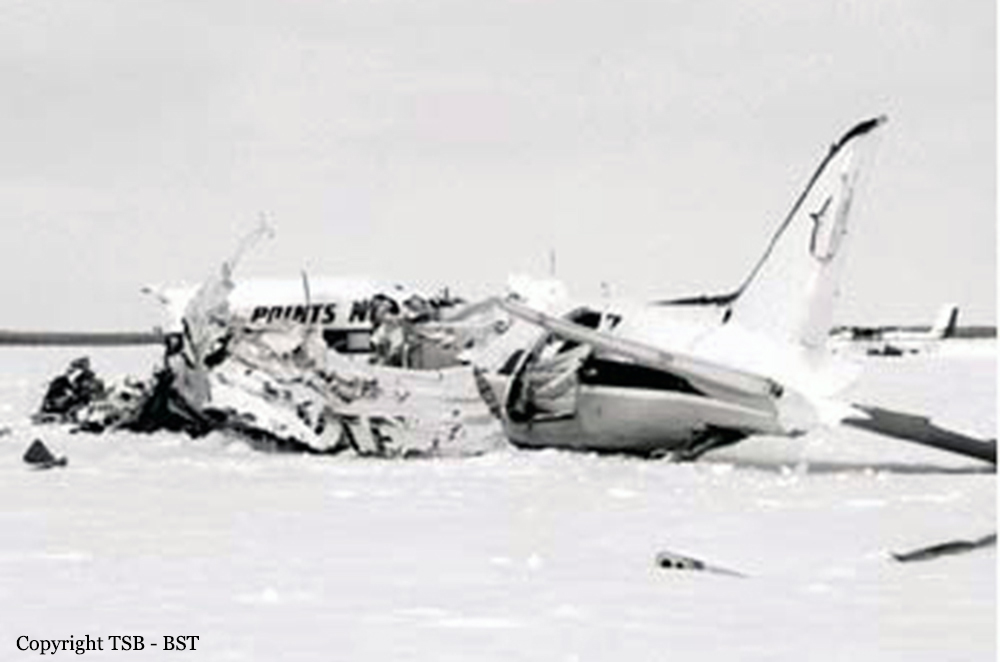
Crash of a Douglas C-47B-DK in Mexico City
Date & Time:
Feb 3, 2000
Survivors:
Yes
Schedule:
Mexico City - Mexico City
Crew on board:
2
Crew fatalities:
Pax on board:
0
Pax fatalities:
Other fatalities:
Total fatalities:
0
Circumstances:
The crew departed Mexico City-Benito Juarez Airport on a local post maintenance test flight. After takeoff, while in initial climb, both engines lost power simultaneously. The crew attempted an emergency landing on a soccer field when the aircraft crash landed near a motorway. Both pilots escaped uninjured while the aircraft was damaged beyond repair.
Crash of a Douglas C-47A-90-DL in Quetzaltenango: 11 killed
Date & Time:
Nov 1, 1998 at 1430 LT
Registration:
N3FY
Survivors:
Yes
Schedule:
Playa Grande - Quetzaltenango
MSN:
20562
YOM:
1944
Crew on board:
2
Crew fatalities:
Pax on board:
16
Pax fatalities:
Other fatalities:
Total fatalities:
11
Circumstances:
The aircraft was completing a humanitarian flight from Playa Grande to Quetzaltenango on behalf of the Living Water Teaching Ministries owned by Jim and Marion Zirkle. On board were 16 passengers and two pilots, among them doctors and a load of medicines and first aid kits for the victims of hurricane Mitch. The approach was completed in poor weather conditions with heavy rain falls and thick fog when the aircraft struck the ground few km from the airport. Seven people were rescued while 11 others were killed, among them Jim Zirkle and his son.
Probable cause:
The crew was approaching the airport under VFR mode in IMC conditions.
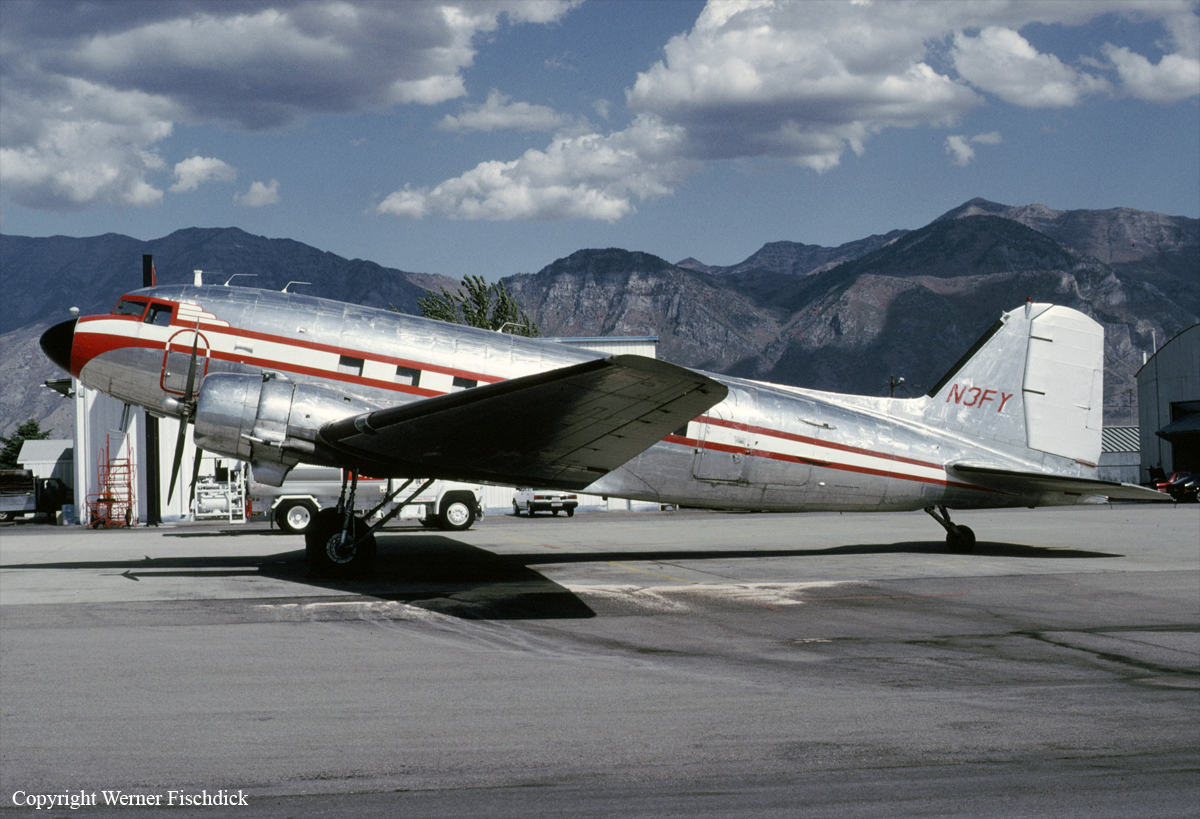
Crash of a Douglas C-47A-90-DL in Point McKenzie
Date & Time:
May 24, 1998 at 0024 LT
Registration:
N67588
Survivors:
Yes
Schedule:
Unalakleet - Anchorage
MSN:
20536
YOM:
1944
Crew on board:
2
Crew fatalities:
Pax on board:
1
Pax fatalities:
Other fatalities:
Total fatalities:
0
Captain / Total hours on type:
7000.00
Aircraft flight hours:
34232
Circumstances:
The captain/operator, the first officer and one passenger, departed on a cross-country positioning flight. The airplane contained about 300 gallons of fuel. After 3.9 hours en route, the flight was cleared for a visual approach to the destination airport. During the approach, both engines lost power about 2,000 feet mean sea level. The pilot stated the right fuel tank was empty. He estimated that 50 to 60 gallons of fuel remained in the left fuel tank. While the airplane was descending toward an area of open water, he attempted to restart the engines without success. He then lowered the landing gear, and made a right turn toward a small airstrip, located about 5 miles northwest of the destination airport. The airplane touched down in an area of soft, marsh covered, terrain. During the landing roll, the airplane nosed down and received damage to the forward, lower portion of the fuselage. An inspection of the airplane by an FAA inspector revealed the left fuel tank contained about 1 inch of fuel. The right fuel selector was positioned on the right auxiliary fuel tank. The left fuel selector was positioned between the left main, and the left auxiliary fuel tanks.
Probable cause:
The pilot's inadequate in-flight planning/decision which resulted in fuel exhaustion and subsequent loss of engine power. A related factor was the soft, marshy terrain at the forced landing area.
Final Report:

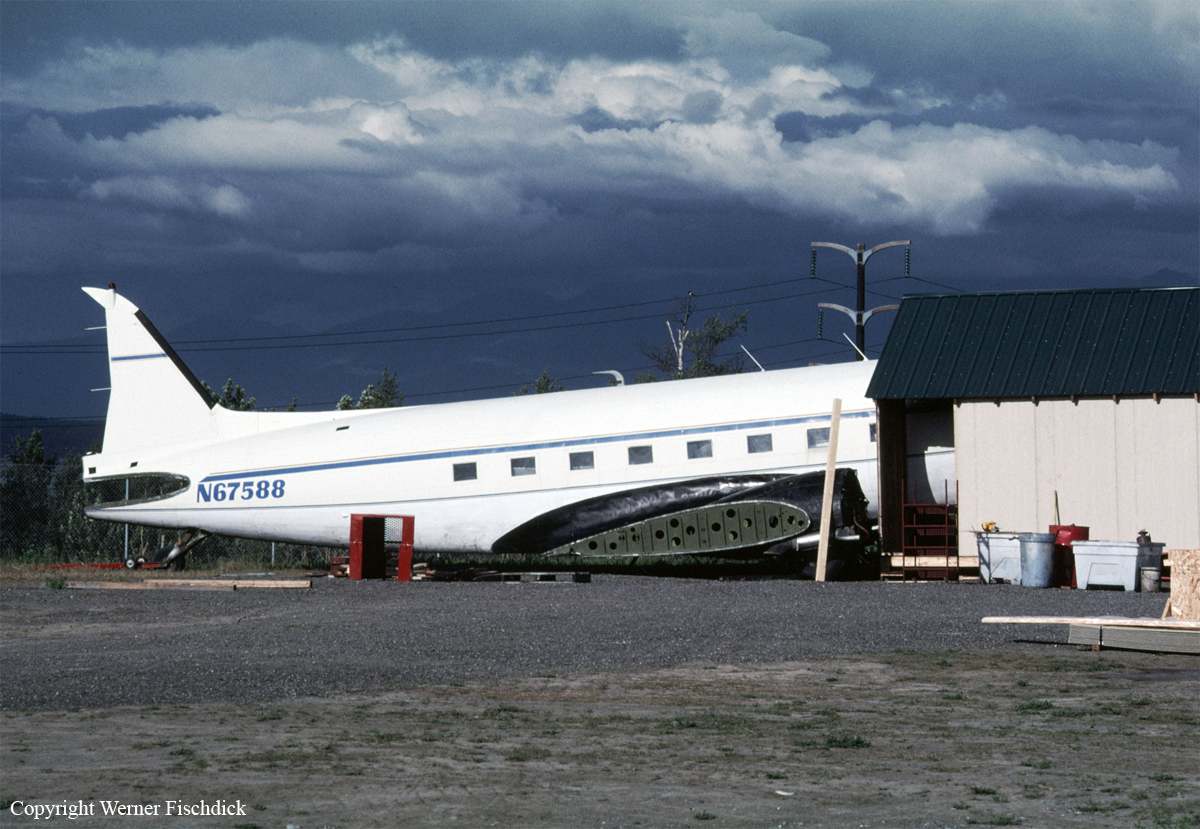
Crash of a Douglas C-47A-45-DL in George Town
Date & Time:
Feb 3, 1998 at 1200 LT
Registration:
N200MF
Survivors:
Yes
Schedule:
George Town – Cap Haïtien
MSN:
9990
YOM:
1943
Crew on board:
3
Crew fatalities:
Pax on board:
24
Pax fatalities:
Other fatalities:
Total fatalities:
0
Circumstances:
On February 3, 1998 at about 1200 eastern standard time, a Douglas DC3C, N200MF, registered to Missionary Flights International, as a 14 CFR Part 91 passenger flight experienced a total loss of engine power on both engines and made a forced landing 1 mile from the Greater Exuma Airport, Moss Town, Bahamas. Visual meteorological conditions prevailed and an IFR flight plan was filed. The airplane sustained substantial damage. The airline transport pilot-in-command (PIC), commercial pilot first officer, and 24 passengers reported no injuries. The flight originated from Moss Town about 1 hour 52 minutes before the accident.
